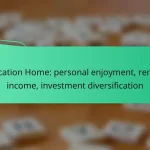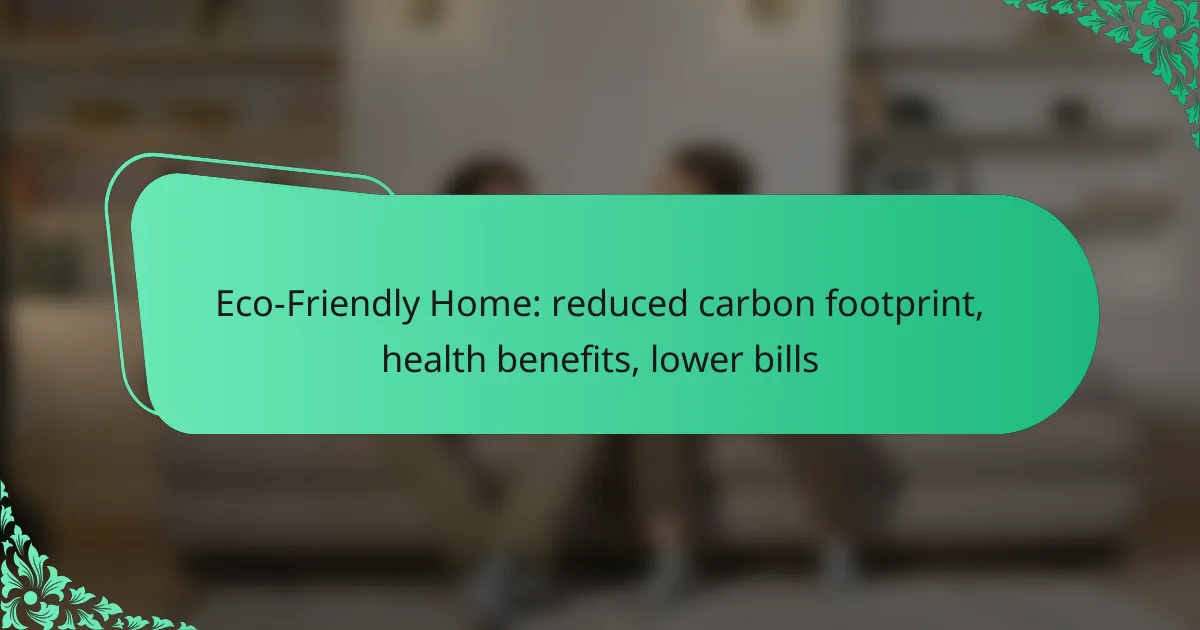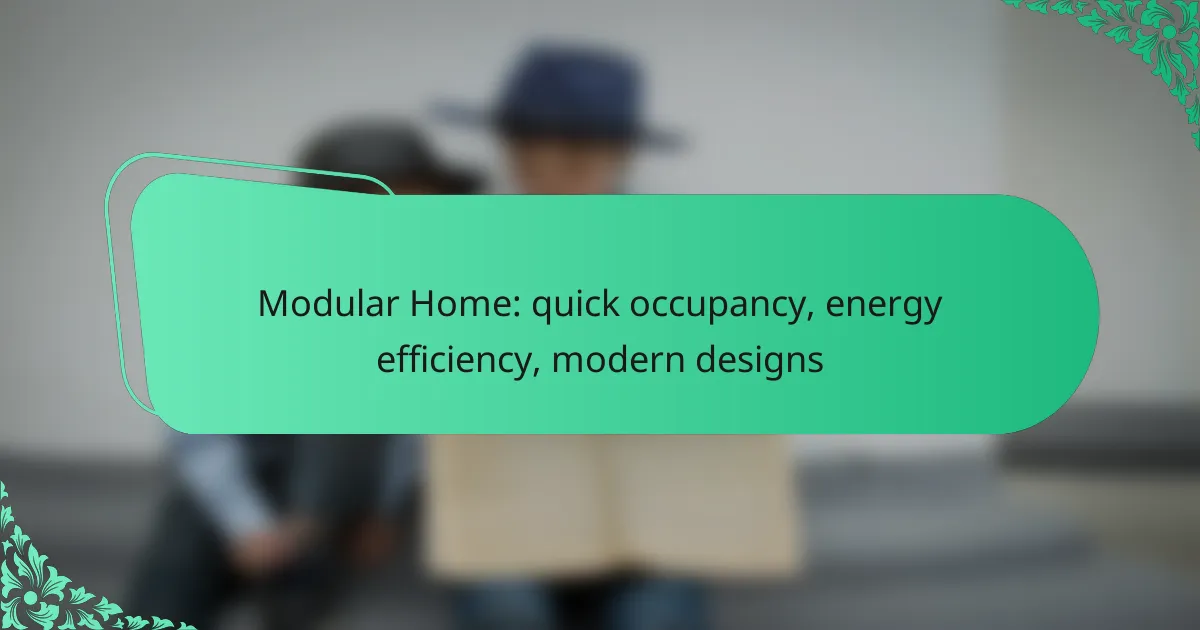Creating an eco-friendly home not only helps reduce your carbon footprint but also promotes a healthier living environment. By adopting sustainable practices, you can enjoy improved air quality and lower utility bills, all while contributing to a more sustainable future. Simple changes can lead to significant savings and enhanced well-being for you and your family.

How can I reduce my carbon footprint in my home?
Reducing your carbon footprint at home involves making choices that lower energy consumption and promote sustainability. Simple actions can lead to significant environmental benefits and cost savings over time.
Energy-efficient appliances
Energy-efficient appliances use less electricity and water compared to standard models, helping to reduce your carbon footprint. Look for the ENERGY STAR label, which indicates that the appliance meets strict efficiency guidelines.
When replacing appliances, consider options like refrigerators, washing machines, and dishwashers that consume up to 50% less energy. This not only decreases your environmental impact but can also lower your utility bills significantly.
Solar panel installation
Installing solar panels allows you to generate your own electricity, reducing reliance on fossil fuels. This can lead to substantial reductions in your carbon emissions and can often provide long-term savings on energy costs.
In many regions, government incentives and tax credits can offset the initial installation costs, making solar energy more accessible. Evaluate your roof’s orientation and shading to determine the best solar solution for your home.
Improved insulation
Improving insulation in your home helps maintain a consistent temperature, reducing the need for heating and cooling systems. This can significantly lower your energy consumption and carbon footprint.
Consider upgrading insulation in attics, walls, and basements using materials like fiberglass or foam. Proper insulation can reduce energy bills by up to 20% and enhance overall comfort in your living space.
Smart home technology
Smart home technology can optimize energy usage by allowing you to control appliances and systems remotely. Smart thermostats, lighting, and energy monitors help you manage consumption more efficiently.
For example, a smart thermostat can learn your schedule and adjust heating and cooling accordingly, potentially saving you 10-15% on energy costs. Invest in devices that integrate well with your home system for maximum efficiency and convenience.

What are the health benefits of an eco-friendly home?
An eco-friendly home offers numerous health benefits, primarily through improved air quality, reduced allergens, and enhanced mental well-being. These advantages contribute to a healthier living environment and can positively impact overall quality of life.
Improved indoor air quality
Eco-friendly homes often utilize non-toxic materials and energy-efficient systems that significantly enhance indoor air quality. By minimizing the use of volatile organic compounds (VOCs) found in traditional paints and furnishings, these homes reduce harmful pollutants that can lead to respiratory issues and other health problems.
Incorporating proper ventilation systems, such as heat recovery ventilators, can further improve air circulation and maintain a fresh indoor atmosphere. Regular maintenance of these systems is essential to ensure optimal performance and air quality.
Reduced allergens
Living in an eco-friendly home can help minimize exposure to common allergens like dust mites, mold, and pet dander. Using hypoallergenic materials for flooring and furnishings can significantly reduce the accumulation of these irritants.
Implementing effective moisture control measures, such as dehumidifiers and proper insulation, can prevent mold growth and create a healthier indoor environment. Regular cleaning with eco-friendly products also helps to keep allergens at bay.
Enhanced mental well-being
An eco-friendly home can positively influence mental health by creating a calming and restorative environment. Natural light, green spaces, and sustainable materials contribute to a sense of tranquility and connection to nature, which can reduce stress and anxiety levels.
Incorporating elements like indoor plants can further enhance this effect, as they improve air quality and provide a soothing aesthetic. Creating spaces that promote relaxation and mindfulness can lead to improved overall mental well-being.

How can eco-friendly homes lower utility bills?
Eco-friendly homes can significantly reduce utility bills by optimizing energy and water usage through sustainable practices and technologies. By implementing energy-efficient systems and water-saving fixtures, homeowners can see substantial savings over time.
Lower energy consumption
Lower energy consumption is achieved by using energy-efficient appliances, LED lighting, and proper insulation. These upgrades can reduce electricity usage by 20-50%, depending on the home’s current efficiency levels.
Consider investing in smart thermostats that adjust heating and cooling based on occupancy, which can further decrease energy costs. Regular maintenance of HVAC systems also ensures they operate efficiently, preventing unnecessary energy waste.
Water-saving fixtures
Water-saving fixtures, such as low-flow showerheads and dual-flush toilets, can significantly reduce water usage. These fixtures can cut water consumption by 30-50%, leading to lower water bills.
Installing rainwater harvesting systems can also provide an alternative water source for irrigation, further decreasing reliance on municipal water supply and associated costs. Regularly checking for leaks can prevent wasted water and additional expenses.
Tax incentives for green upgrades
Many governments offer tax incentives for homeowners who make eco-friendly upgrades, such as solar panel installations or energy-efficient windows. These incentives can offset initial costs and improve the return on investment for green renovations.
Check local regulations and available programs, as they can vary significantly by region. In the U.S., for example, the federal solar tax credit allows homeowners to deduct a percentage of the cost of solar systems from their federal taxes, making it more financially viable to go green.

What are the prerequisites for making my home eco-friendly?
To make your home eco-friendly, start by assessing your current energy usage and identifying areas for improvement. This involves understanding your energy consumption patterns and planning your budget accordingly to implement sustainable changes.
Energy audit
An energy audit is a crucial first step in making your home eco-friendly. It involves a thorough examination of your home’s energy use, identifying inefficiencies, and suggesting improvements. You can conduct a DIY audit or hire a professional to get a detailed report.
During the audit, focus on areas such as insulation, windows, and appliances. Common findings include outdated heating systems or air leaks, which can significantly increase energy costs. Addressing these issues can lead to substantial savings on utility bills.
Budget planning
Effective budget planning is essential for transitioning to an eco-friendly home. Determine how much you can invest in upgrades and prioritize projects based on their potential return on investment. Consider both immediate costs and long-term savings when planning your budget.
For example, investing in energy-efficient appliances may have a higher upfront cost but can reduce your energy bills significantly over time. Look for local incentives or rebates that can offset initial expenses, making eco-friendly upgrades more affordable.

How do I choose eco-friendly materials for my home?
Choosing eco-friendly materials for your home involves selecting products that minimize environmental impact while promoting health and sustainability. Focus on options that are recycled, locally sourced, and free from harmful chemicals to create a healthier living space.
Recycled materials
Recycled materials are an excellent choice for reducing waste and conserving resources. Look for products made from reclaimed wood, recycled metal, or glass, which can be used in flooring, countertops, and insulation. These materials not only lower your carbon footprint but often add unique character to your home.
When selecting recycled materials, check for certifications that indicate the percentage of recycled content. Aim for products with at least 30% recycled content to ensure a significant environmental benefit.
Locally sourced products
Locally sourced products help reduce transportation emissions and support the local economy. When possible, choose materials that are produced within a few hundred kilometers of your home to minimize carbon output. This includes items like locally harvested timber, stone, or even furnishings crafted by local artisans.
To find local suppliers, visit farmers’ markets, home improvement stores, or specialty shops that focus on regional products. This not only benefits the environment but also fosters community relationships.
Non-toxic finishes
Non-toxic finishes are essential for maintaining indoor air quality and overall health. Look for paints, stains, and sealants that are low in volatile organic compounds (VOCs) to reduce harmful emissions. Brands that are labeled as zero-VOC or low-VOC are preferable for a healthier home environment.
When selecting finishes, consider natural options like plant-based oils or water-based products. Always read labels carefully to ensure that the finishes you choose meet safety standards and are free from harmful chemicals.

What are the emerging trends in eco-friendly home design?
Emerging trends in eco-friendly home design focus on sustainability, energy efficiency, and health benefits. These trends aim to reduce carbon footprints while enhancing the living experience through innovative materials and technologies.
Smart home technology
Smart home technology is becoming integral to eco-friendly designs, allowing homeowners to monitor and control energy usage effectively. Devices such as smart thermostats, energy-efficient lighting, and automated appliances can significantly lower energy consumption.
For instance, smart thermostats can learn your schedule and adjust heating and cooling accordingly, potentially reducing energy bills by 10-20%. Homeowners should consider systems that integrate easily with existing setups for maximum efficiency.
Use of sustainable materials
The use of sustainable materials is a key trend in eco-friendly home design, emphasizing renewable resources and reducing environmental impact. Materials such as bamboo, reclaimed wood, and recycled metal are popular choices that enhance durability and aesthetics.
When selecting materials, look for certifications like FSC (Forest Stewardship Council) or Cradle to Cradle, which ensure responsible sourcing. This not only supports sustainability but can also improve indoor air quality, contributing to better health for occupants.
Energy-efficient appliances
Energy-efficient appliances are essential for reducing energy consumption in eco-friendly homes. These appliances are designed to use less electricity and water, leading to lower utility bills and a smaller carbon footprint.
Homeowners should look for appliances with the ENERGY STAR label, which indicates compliance with energy efficiency guidelines. Investing in these appliances can lead to savings of 10-50% on energy costs compared to standard models.
Green roofing and landscaping
Green roofing and landscaping are innovative practices that enhance sustainability while providing aesthetic benefits. Green roofs can improve insulation, reduce stormwater runoff, and promote biodiversity by supporting plant and animal life.
Incorporating native plants in landscaping can also minimize water usage and maintenance. Homeowners should consider local climate conditions when selecting plants to ensure they thrive with minimal resource input.










